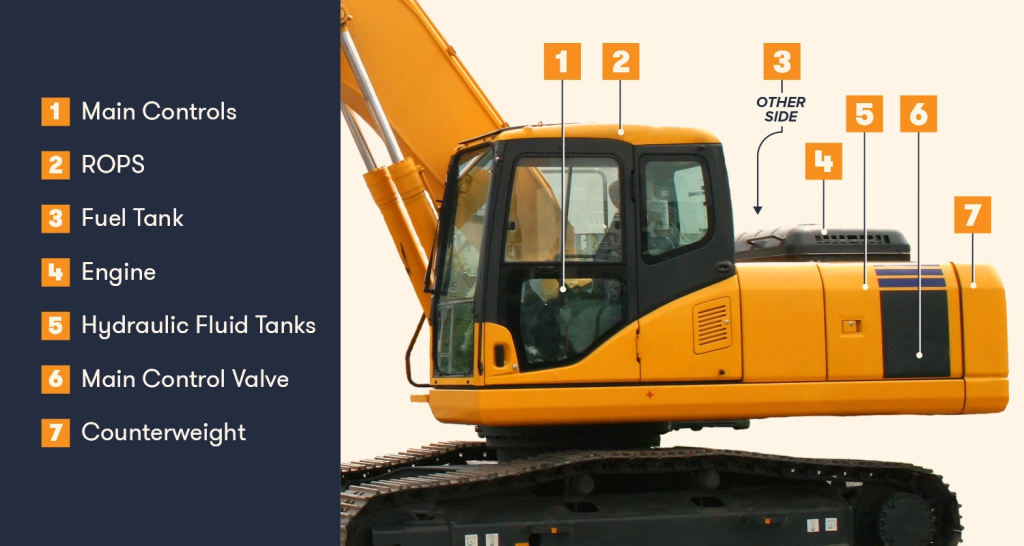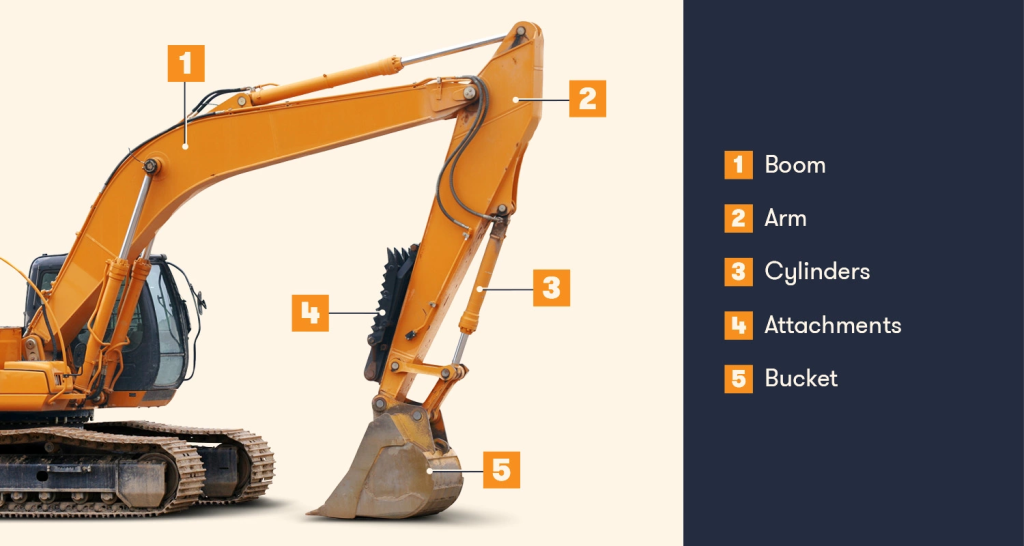keywords:excavator main parts,parts of the excavator
excavator main parts
Excavators are powerful machines used in construction, mining, and other industries for various tasks. Understanding the main parts of an excavator is essential for anyone operating or maintaining these heavy-duty vehicles. Here are the key components that make up an excavator:

Cab: The cab is the operator’s workspace, equipped with controls, a steering wheel, pedals, and monitoring instruments. It provides a comfortable and safe environment for operating the excavator.
Engine: The engine is the heart of the excavator, providing the power needed to operate the hydraulic system, tracks, and attachments. It is responsible for driving all the machine’s functions.
Hydraulic System: The hydraulic system uses hydraulic fluid under high pressure to control the excavator’s movements. It powers the boom, arm, bucket, and other attachments, allowing for precise and efficient operations.

Boom: The boom is the large, extendable arm of the excavator that provides reach and height for digging, lifting, and loading materials. It plays a crucial role in the excavator’s versatility.
Arm (or Stick): The arm, also known as the stick, connects to the end of the boom and holds the attachment or bucket. It works alongside the boom to maneuver the attachment for various tasks.
Bucket: The bucket is the attachment at the end of the arm used for scooping, digging, and loading materials such as soil, rocks, and debris. Different types of buckets are available for different applications.

Undercarriage: The undercarriage of an excavator includes tracks, track frame, sprockets, and rollers. It supports the weight of the machine, provides stability, and allows for mobility on different terrains.
Hydraulic Cylinders: Hydraulic cylinders control the movement of the boom, arm, and bucket. They enable precise and controlled operation of the excavator’s attachments.
Swing Gear (or Swing Bearing): The swing gear allows the upper structure of the excavator to rotate 360 degrees on the undercarriage. This rotation capability enables the excavator to work in different directions without repositioning the machine.
Understanding these main parts of an excavator and their functions is vital for safe and efficient operation of these heavy machines. Proper maintenance, regular inspections, and operator training are essential to ensure the longevity and optimal performance of excavators in various construction and excavation projects.